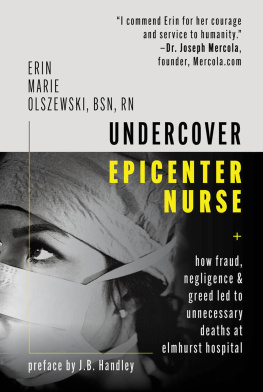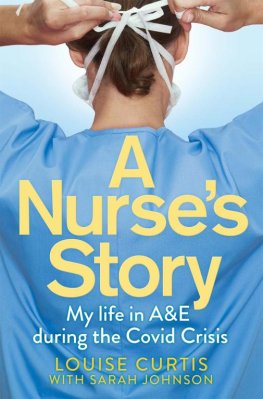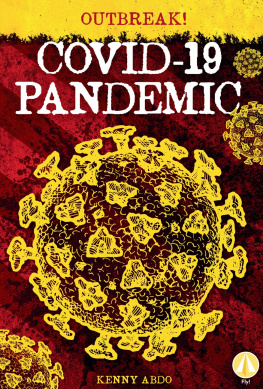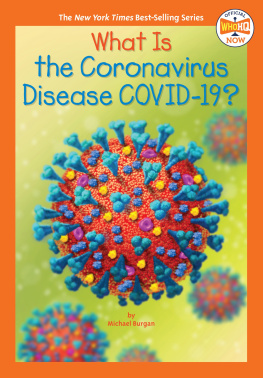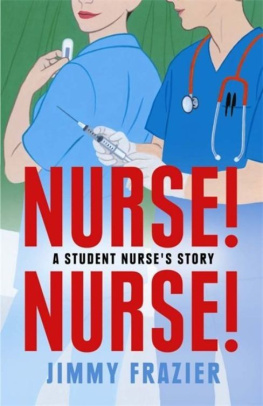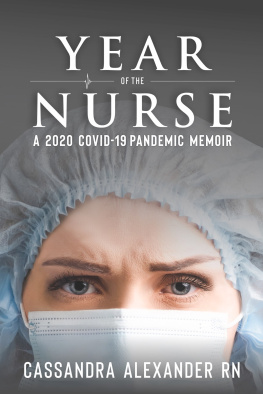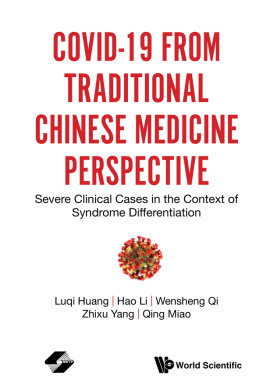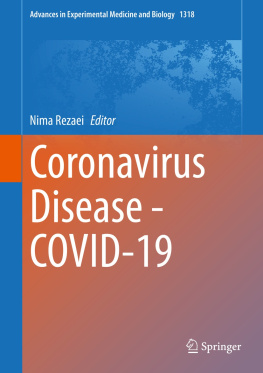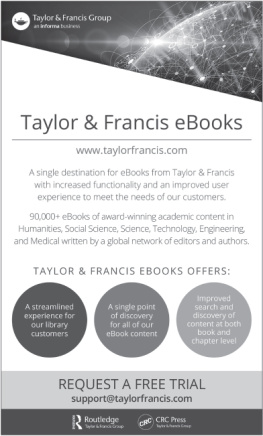

Copyright 2020 by Erin Marie Olszewski
Preface copyright 2020 by J. B. Handley
All rights reserved. No part of this book may be reproduced in any manner without the express written consent of the publisher, except in the case of brief excerpts in critical reviews or articles. All inquiries should be addressed to Skyhorse Publishing, 307 West 36th Street, 11th Floor, New York, NY 10018.
Hot Books may be purchased in bulk at special discounts for sales promotion, corporate gifts, fund-raising, or educational purposes. Special editions can also be created to specifications. For details, contact the Special Sales Department, Skyhorse Publishing, 307 West 36th Street, 11th Floor, New York, NY 10018 or .
Hot Books is a registered trademark of Skyhorse Publishing, Inc., a Delaware corporation.
Visit our website at www.skyhorsepublishing.com.
10 9 8 7 6 5 4 3 2 1
Library of Congress Cataloging-in-Publication Data is available on file.
Print ISBN: 978-1-5107-6366-1
Ebook ISBN: 978-1-5107-6367-8
Cover design by Mary Mohr, BuzzFactory
Jacket design by Brian Peterson
Printed in the United States of America
This book is dedicated to the thousands of people who have lost their lives unnecessarily. I promise to continue the fight for justice in your memory. And to my three little boys: As you grow up, may you never be afraid to stand up and speak out when you know something is wrong, even if youre the only one. Thank you for being my why every day. I love you.
CONTENTS
by J.B. Handley
PREFACE
For anyone willing to look, there are so many facts that tell the true story of COVID-19. Can you handle the truth? It goes a little something like this: Knowing what we know today about COVID-19s Infection Fatality Rate, asymmetric impact by age and medical condition, nontransmissibility by asymptomatic people and in outdoor settings, near-zero fatality rate for children, and the basic understanding of viruses through Farrs Law, locking down society was a boneheaded policy decision so devastating that historians may judge it as the all-time worst decision ever made.
Worse, as these clear facts have become available, many policymakers havent shifted their positions, despite the fact that every hour under any stage of lockdown has a domino effect of devastation to society. Meanwhile, the mediawith a few notable exceptionsare oddly silent on all the good news. To put it simply, for the time being were screwed.
Luckily, an unexpected group of heroes across the political landscapemany of them doctors and scientistshas emerged to tell the truth, despite facing extreme criticism and censorship from an angry mob desperate to continue fighting an imaginary war. Erin Marie Olszewski is one of those heroes.
In this book, Erin lays out the straight facts. A brave nurse, veteran, and mother, she goes far beyond the cold data of any study to share the human tragedy that she witnessed inside of New York Citys COVID-19 epicenter, Elmhurst Hospital.
As you read her story, and consider what you know so far, who should you believe? You may be reading this in lockdown. You may be reading it on a beach if youre lucky enough to be in a reopened state. With the media, government, and your Facebook feed filling your head with conflicting information, how can you cut through the noise to hear the truth of what real Americans like Erin are seeing on the front lines? Her wordsand her evidencespeak for themselves. I invite you to read them and digest it all with an open mind.
Erin is a warrior for the truth, but she alone cannot tell this entire story. Her experience is an integral part of the true story of COVID-19. I will leave her to tell you about the negligence, greed, and mismanagement that she has experienced at Elmhurst Hospital. In the meantime, allow me to share several other undisputed factsproven by scientific research studies and expert analysisthat constitute the setting for her powerful tale.
Fact #1: The Infection Fatality Rate for COVID-19 is somewhere between 0.070.20 percent, in line with seasonal flu.
The Infection Fatality Rate (IFR) math of ANY new virus ALWAYS declines over time as more data become available, as any virologist could tell you. In the early days of COVID-19where we only had data from Chinathere was a fear that the IFR could be as high as 3.4 percent, which would indeed be cataclysmic.
On April 17, the first study was published by Stanford researchers that should have ended all lockdowns immediately, as the scientists reported that their research implies that the infection is much more widespread than indicated by the number of confirmed cases and pegged the IFR as low as 0.120.2 percent. The researchers also speculated that the final IFR, as more data emerged, would likely be lower. For context, seasonal flu has an IFR of 0.1 percent. Smallpox? 30 percent. COVID-19, to reiterate? 0.12 to 0.2 percent.
As the first study to define the IFR, the Stanford study came under withering criticism, prompting the lead researcher, Dr. John Ioannidis, to note, Theres some sort of mob mentality here operating that they just insist that this has to be the end of the world, and it has to be that the sky is falling. Its attacking studies with data based on speculation and science fiction. But dismissing real data in favor of mathematical speculation is mind-boggling.
Like all good science, the Stanford data on IFR have now been replicated so many times that our own Centers for Disease Control (CDC) came out this week to announce that their best estimate showed an IFR below 0.3 percent. In this article on the CDCs new data, they also highlighted how the cascading declines in IFR has removed all the fears of doomsday:
That best estimate scenario also assumes that 35 percent of infections are asymptomatic, meaning the total number of infections is more than 50 percent larger than the number of symptomatic cases. It therefore implies that the IFR is between 0.2 percent and 0.3 percent. By contrast, the projections that the CDC made in March, in which 2.2 million Americans died, based on an IFR of 0.9 percent.
If youre still unconvinced that the IFR of COVID-19 is roughly in line with a bad flu season, the most comprehensive analysis I have seen comes from Oxford University, which recently stated: Taking account of historical experience, trends in the data, increased number of infections in the population at largest, and potential impact of misclassification of deaths gives a presumed estimate for the COVID-19 IFR somewhere between 0.1 percent and 0.41 percent.
Finally, just last week, Stanfords Dr. Ioannidis published a meta-analysis (because so many IFR studies were done around the world in April and early May) where he analyzed TWELVE separate IFR studies, and his conclusion is so good, Ill just leave you with it:
The infection fatality rate (IFR), the probability of dying for a person who is infected, is one of the most critical and most contested features of the coronavirus disease 2019 (COVID-19) pandemic. The expected total mortality burden of COVID-19 is directly related to the IFR.
Moreover, justification for various non-pharmacological public health interventions depends crucially on the IFR. Some aggressive interventions that potentially induce also more pronounced collateral harms may be considered appropriate, if IFR is high. Conversely, the same measures may fall short of acceptable risk-benefit thresholds, if the IFR is low.... Interestingly, despite their differences in design, execution, and analysis, most studies provide IFR point estimates that are within a relatively narrow range. Seven of the twelve inferred IFRs are in the range 0.07 to 0.20 (corrected IFR of 0.06 to 0.16) which are similar to IFR values of seasonal influenza. Three values are modestly higher (corrected IFR of 0.250.40 in Gangelt, Geneva, and Wuhan) and two are modestly lower than this range (corrected IFR of 0.020.03 in Kobe and Oise).
Next page
